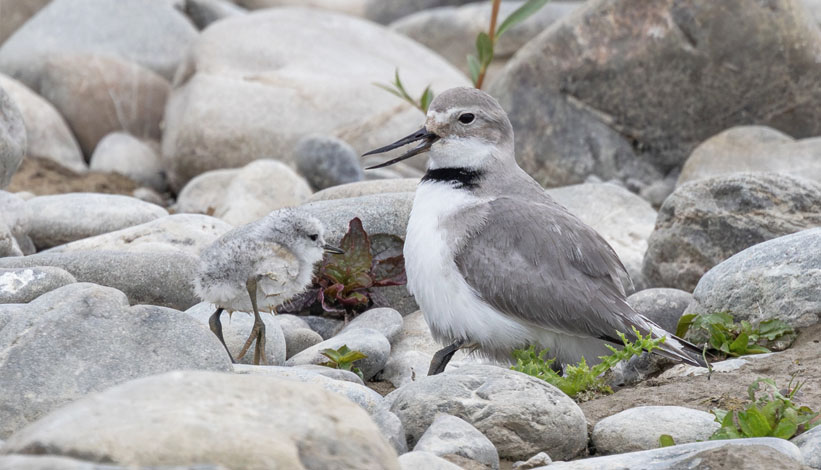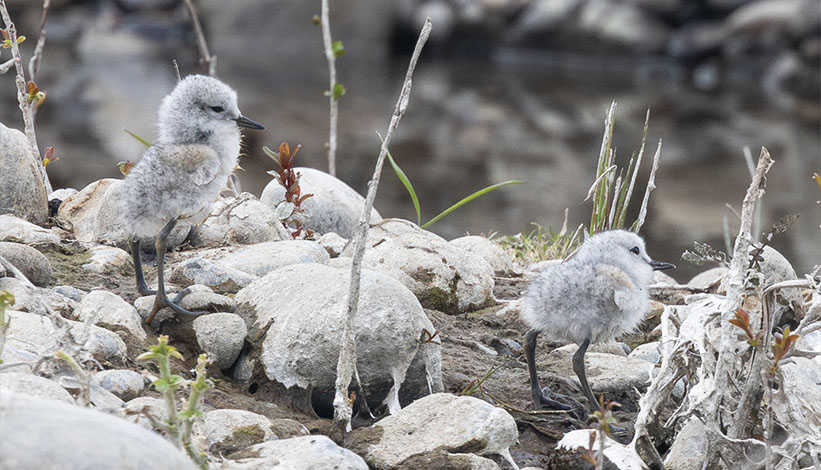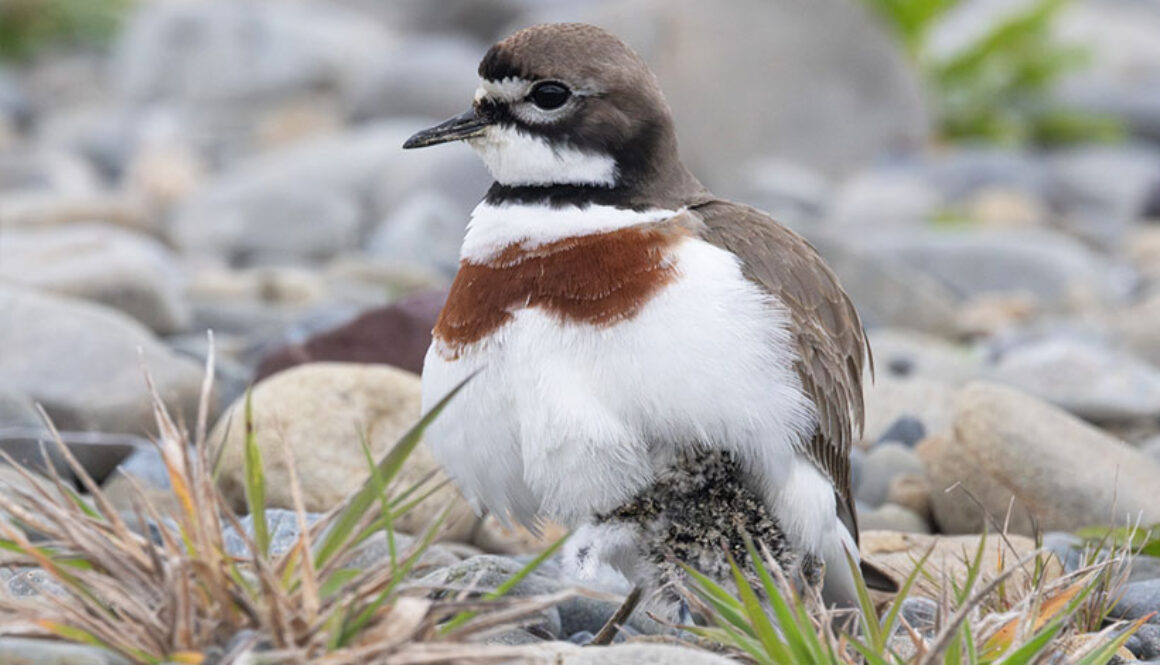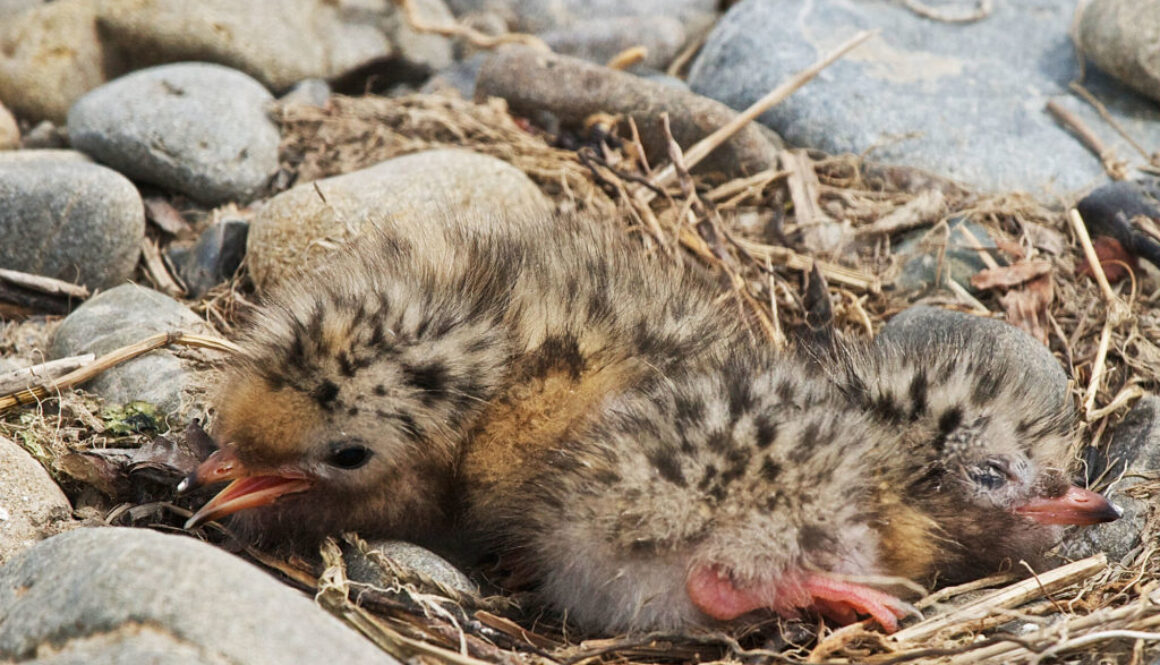First chicks
23 September: Grant Davey reports first banded dotterel nest on the Ashley Rakahuri
The banded dotterel nest found when we were clearing weeds recently had only one egg in it but both birds were still there. So, I lay down a few metres from the nest to see what they would do. They both came back readily and the female sat on a chick I hadn’t seen, which was only about 3 metres away – so close I couldn’t focus the camera. I backed off and then the male went to the chick and placed himself over it.
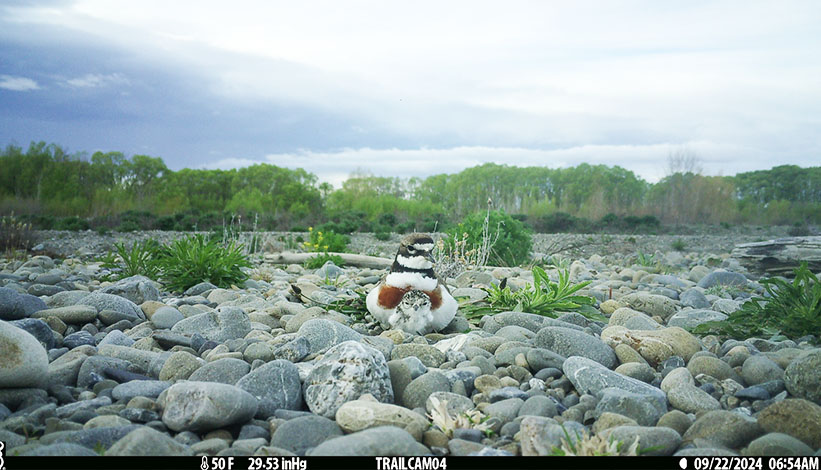
02 October: Grant Davey reports first wrybill chicks on the Ashley Rakahuri
Wrybills were spotted along a small braid. One of them was one of our banded males. The other bird was a female, with some quite odd behaviour – chasing a banded dotterel and a chaffinch. However, it became clear when I spotted 2 small chicks with her.
